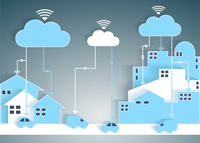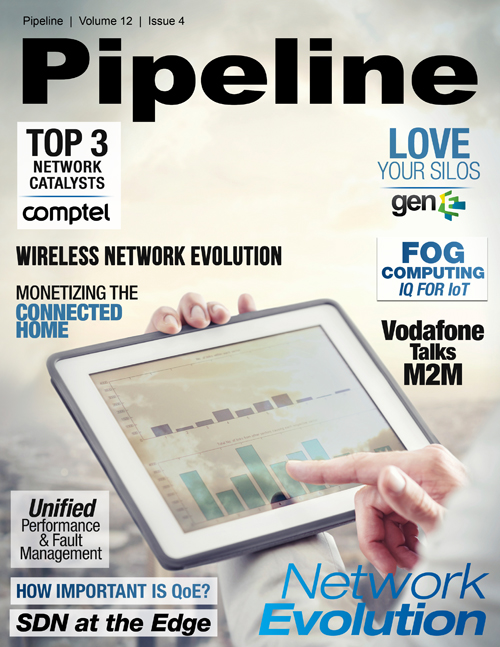Wireless Network Evolution
By: Tim Young

Over the last few weeks, I’ve been engaging in what has become a little annual tradition. A notification hits my phone that a new iOS update is available, and I proceed to ignore it for a couple of weeks.
The nicely rendered red dot—a symbol that my South Carolina upbringing will forever cause me to associate with liquor stores—graces my settings icon for days and days while I attempt to ignore its beckoning. The dot contains a single digit crafted in the Helvetica font. After the update, that font will be replaced with a slightly different font, which will cause inexplicable anger for some.
But I will see such a jarring shift coming, for I am no early adopter. Fools rush in where angels fear to tread. I kept my Motorola Razr V3 until 2010. Let the others find the flaws and I’ll benefit from their knowledge. Sound planning, no?
About Ontology
Ontology Systems is revolutionising how telecommunication network operators get to know their networks. We replace expensive and fragmented views of your network with affordable,
comprehensive and dynamic panoramas so you can truly know your network.
Ontology Systems was founded in 2005 by Benedict Enweani (CEO) and Leo Zancani (CTO) to radically reduce the cost, risk and effort of joining up data in the IT and network estates of
Communication Service Providers (CSPs).
CSP day-to-day operations require interaction with a huge range of extremely high-variety data, and this interaction needs the data to be joined-up in order to present a cogent
picture of the business, its assets and operations to the processes that form the CSP.
Because of the wide variety, the cost of joining the data up represents a staggeringly high proportion of CSP operational costs, and the rigidity and brittleness of present-day
solutions to the problem fundamentally limit the agility of the business, making it hard to compete against ever more nimble emergent players.
Ontology Systems' products are based on its Ontology 5 graph-search data alignment and linking platform which uses new ways of representing and storing data to radically reduce the
cost and risk associated with joining up data from multiple, misaligned sources and understanding its quality.
Ontology's Intelligent 360 for Network Operators product line employs this capability to build a comprehensive end-to-end Dynamic Network Topology Model and use it to drive tools for
Network Troubleshooting, Customer and Infrastructure Navigation and Change Management.
Ontology Systems is proud to count some of the world's largest telecommunications companies amongst its customers, including a number of Vodafone Group companies, Telenor, Telkom
South Africa and Level 3 Communications. For more information, visit www.ontology.com
So I finally went for the iOS 9 update just this morning, just in time to see the spate of recent blurbs about WiFi Assist, the feature which uses your mobile carrier’s data connection to shore up your signal when the WiFi is shoddy. It’s a neat feature, but one you unfortunately are opted into by default. If your WiFi router happens to be located in your home office on one side of the house and you all-too-frequently watch Hulu on your phone in bed on the opposite side of the house where the WiFi is spotty, you may be in for a rude awakening if you happen to have a cap on your data plan.
Unless you’re like me and let the other poor saps make that mistake for you.
(Note to self: pick up a WiFi range extender.)
And since I didn’t get burnt by this new feature directly, I can instead marvel at how beautifully complex wireless networks have become. I remember writing about BT’s BluePhone (later dubbed ‘Fusion’) ten years ago, full of wide-eyed wonder at the notion that a single handset could move seamlessly between wireless networks and a home VoIP line without a noticeable change in user experience for the caller. A decade later, such a converged experience has become an expectation.
And this is all part of a wider trend toward faster speeds, increased complexity, and increased data consumption.
State of the network
As I mentioned in a recent piece on agile wireless networks, Cisco’s VNI is predicting serious increases in mobile data speeds, which should double by the end of the decade. The average mobile network connection speed (1.7 Mbps as of 2014) is predicted to surpass 2.0 Mbps by 2016, and reach almost 4.0 Mbps by 2019.
I also mentioned that, according to Infonetics, the number of VoLTE subscribers will grow at a 145% CAGR until 2017, and a combination of over-the-top mobile VoIP and VoLTE services will become a $16 billion business by that year.
The VNI also reports that nearly half a billion (497 million) mobile devices and connections were added to the network in 2014, and that smartphones made up 88 percent of that growth. In addition, there were nearly 109 million wearable devices on the network, generating 15 petabytes of monthly traffic, and we all know that number is barely scratching the surface when it comes to wearable growth and the overall growth of the Internet of Things.



















